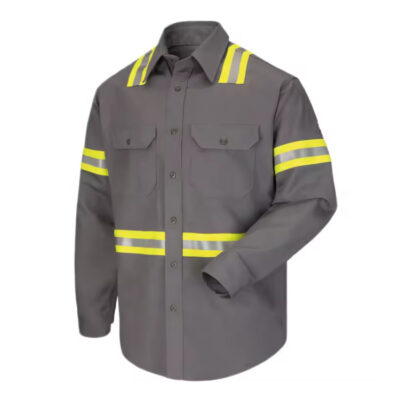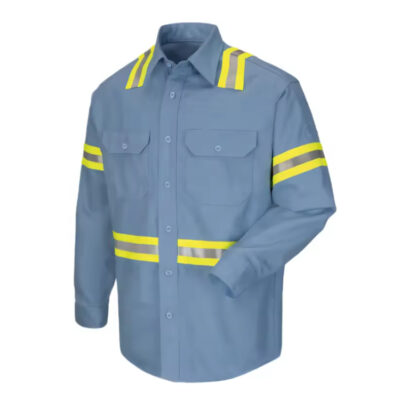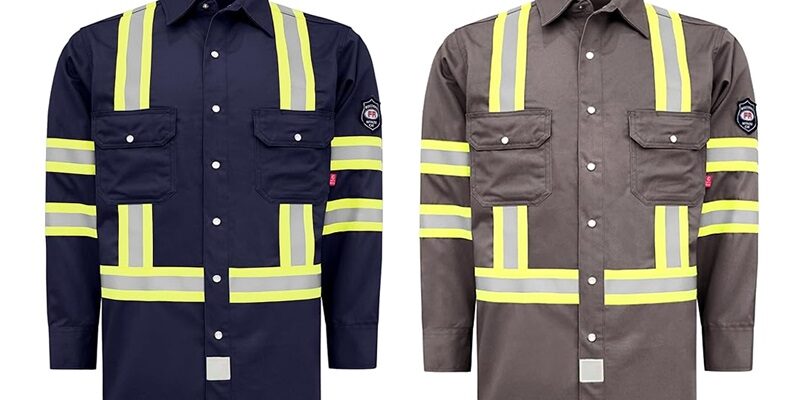Choosing the Right Workwear Fabric: Cotton, Poly-Cotton, or Polyester?
Introduction: Why Fabric Matters in Workwear
When sourcing workwear for large teams, the choice of fabric is not just a design decision—it impacts comfort, durability, compliance, and total cost of ownership. Buyers and distributors often ask whether cotton, poly-cotton, or polyester is the most suitable option for their projects. Each material comes with its unique strengths, making fabric selection a crucial step for procurement managers and sourcing specialists.
In this article, we’ll break down the differences between these three core workwear fabrics, compare their advantages and trade-offs, and share sourcing insights for long-term B2B supply.
👕 Cotton Workwear: Comfort and Natural Breathability
Cotton has been the foundation of workwear for decades. Its natural properties make it soft and breathable, ensuring worker comfort even in long shifts.
Advantages of Cotton:
-
🌬️ Breathability: Excellent airflow for hot environments.
-
🌿 Natural Fiber: Hypoallergenic and gentle on skin.
-
🧵 Comfort: Feels soft and premium, often preferred by workers.
Challenges of Cotton:
-
Shrinks after repeated washes if not treated.
-
Wrinkles easily, requiring more maintenance.
-
Less durable compared to synthetics in heavy-duty industries.
Cotton uniforms are a great choice for hospitality, light manufacturing, and front-of-house teams, where presentation and comfort are critical.
👔 Poly-Cotton Blends: The Best of Both Worlds
Poly-cotton (commonly 65% polyester and 35% cotton) combines the durability of synthetics with the comfort of natural fibers. This blend is widely used in uniforms and industrial garments.
Advantages of Poly-Cotton:
-
🔄 Durability: Holds shape longer, resists shrinking.
-
💧 Moisture Management: Better sweat-wicking than pure polyester.
-
💵 Cost-Effective: Balanced performance at competitive pricing.
Challenges of Poly-Cotton:
-
Not as breathable as pure cotton.
-
May pill over time if low-quality fibers are used.
Poly-cotton is ideal for logistics companies, warehouses, and retail uniforms, offering a balance between wearability and budget control.
🧥 Polyester Workwear: Engineered for Performance
Polyester has become the backbone of many industrial and high-visibility workwear lines. Known for its strength, color retention, and low maintenance, it’s often chosen for high-volume uniform programs.
Advantages of Polyester:
-
🛡️ High Durability: Excellent abrasion and tear resistance.
-
🌧️ Quick Drying: Dries faster than natural fibers.
-
🎨 Color Retention: Colors remain vibrant after repeated washing.
Challenges of Polyester:
-
Less breathable than cotton.
-
May feel less comfortable for long wear in hot environments.
Polyester workwear is widely used in construction, oil & gas, and logistics, where durability and compliance are more critical than comfort.
📊 Quick Comparison Table
| Feature | Cotton | Poly-Cotton | Polyester |
|---|---|---|---|
| Breathability | ⭐⭐⭐⭐⭐ | ⭐⭐⭐ | ⭐⭐ |
| Durability | ⭐⭐ | ⭐⭐⭐⭐ | ⭐⭐⭐⭐⭐ |
| Maintenance | Moderate | Easy | Very Easy |
| Cost Efficiency | Mid-High | Balanced | Low-Mid |
| Ideal Use Cases | Hospitality, light industry | Warehousing, retail | Heavy industry, outdoor |
🔑 Sourcing Insight: Matching Fabric to Industry
-
Construction & Oil/Gas → Polyester or FR-treated blends.
-
Warehousing & Logistics → Poly-cotton uniforms.
-
Corporate & Hospitality → 100% cotton or cotton-rich blends.
By aligning fabric selection with the working environment, procurement teams can minimize replacement cycles, boost employee comfort, and achieve better ROI.
🌐 Partnering with Trusted Manufacturers
Choosing the right fabric is only the first step. The cut, finish, and compliance certifications also matter in building a reliable workwear program. That’s why many global buyers work directly with specialized suppliers.
If you are scaling procurement across multiple categories, partner with experienced Workwear Manufacturers who can guide you through fabric choices and compliance needs.
For breathable and comfortable tops, explore our dedicated Work Shirt Manufacturers to complete your uniform lineup.
Conclusion: Fabric as a Strategic Choice
Cotton, poly-cotton, and polyester each have a clear role in modern workwear sourcing. Whether you prioritize comfort, durability, or cost-efficiency, matching fabric to function ensures that uniforms not only protect workers but also deliver long-term value to your business.
🔎 As a procurement manager or distributor, your role isn’t just about buying garments—it’s about making strategic sourcing decisions that support both safety and brand image.





















